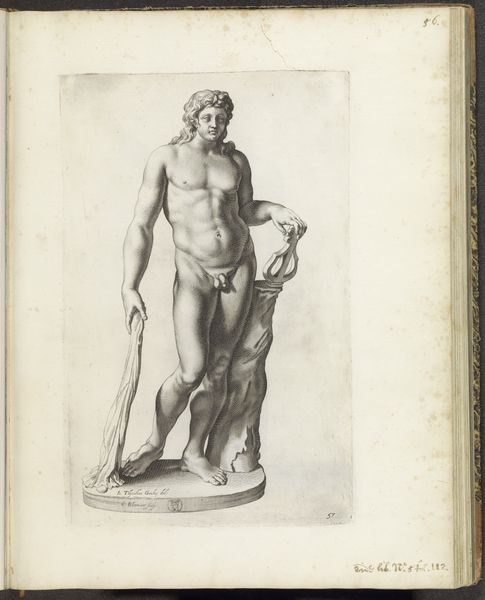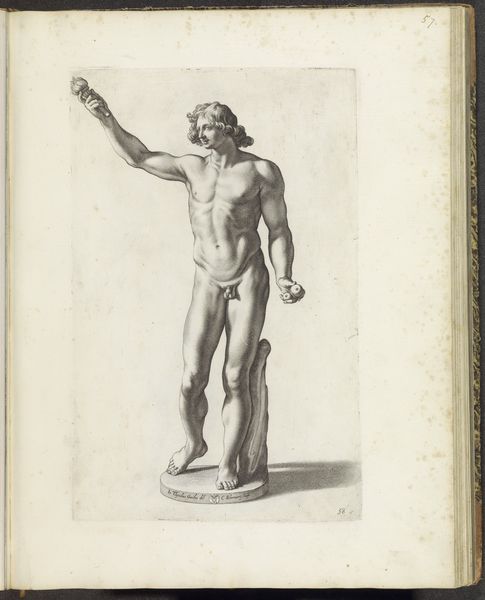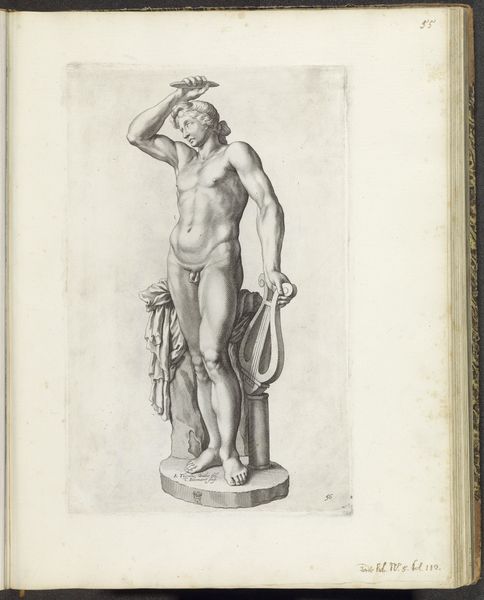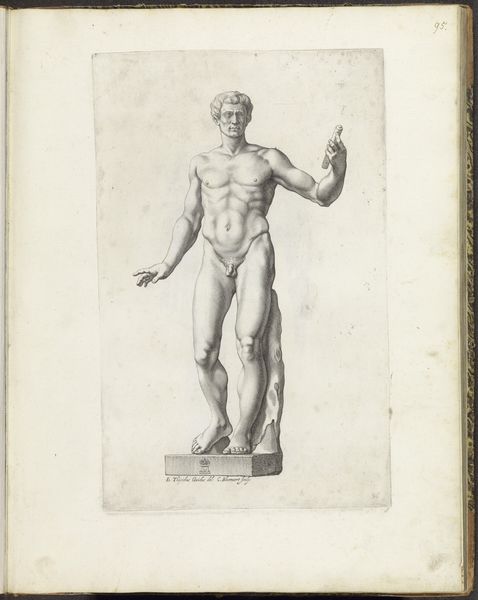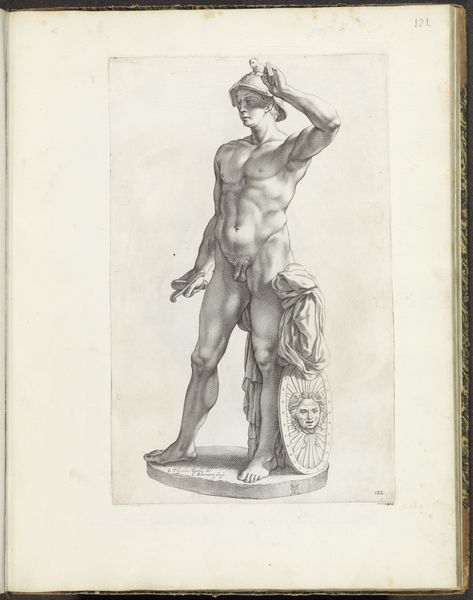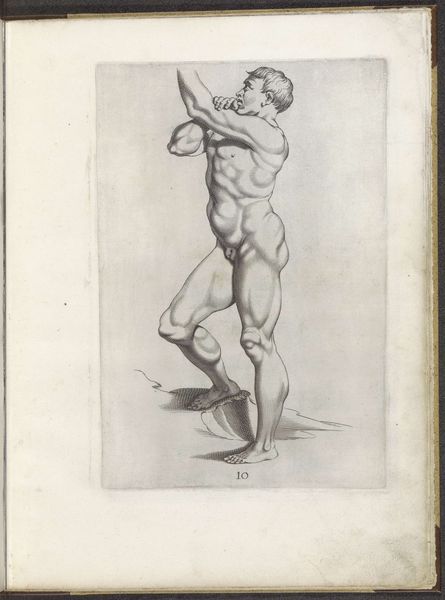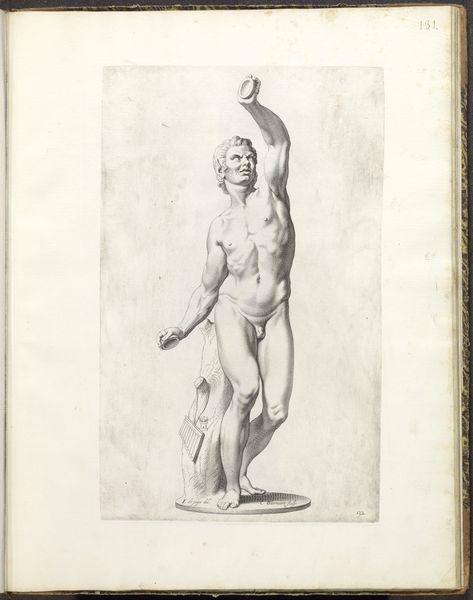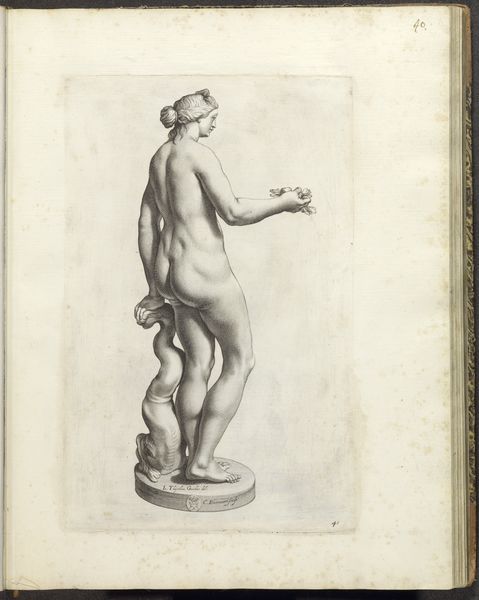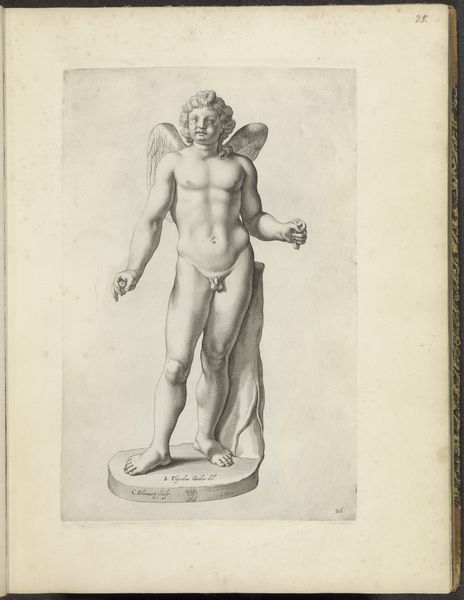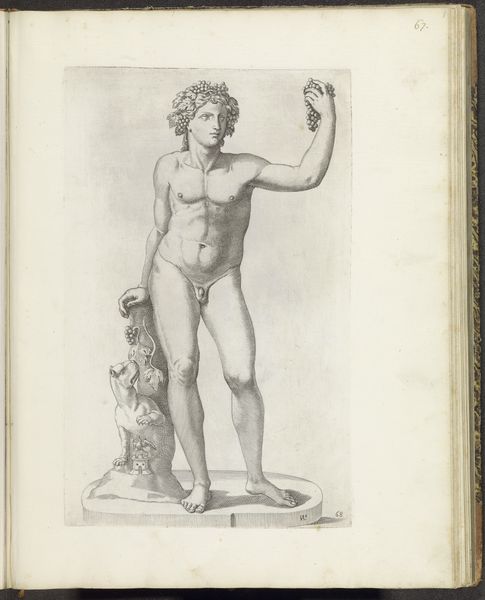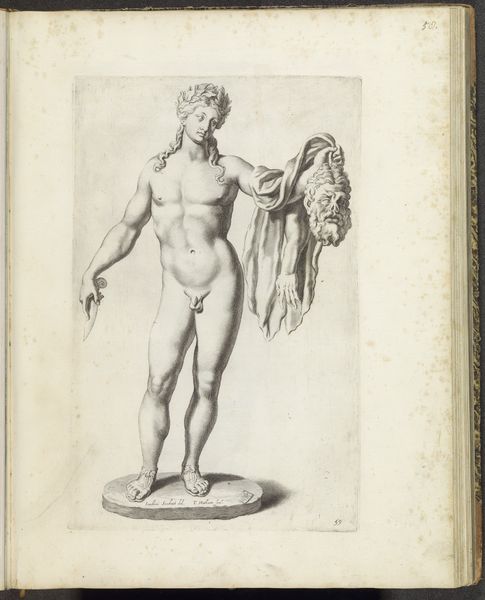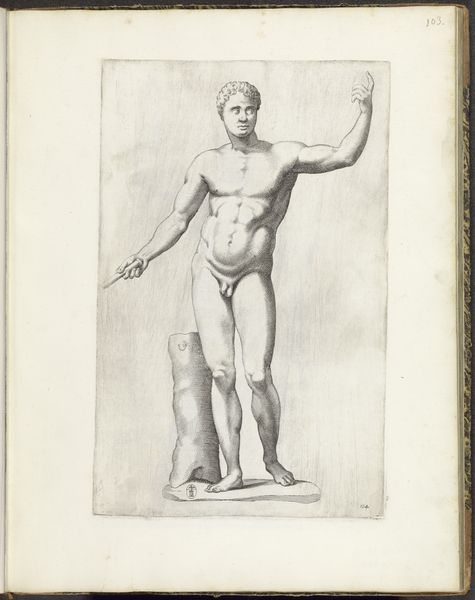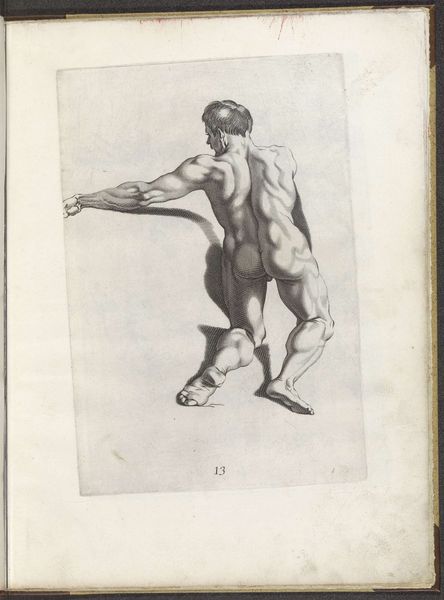
drawing, print, intaglio, pencil
#
drawing
#
baroque
# print
#
intaglio
#
pencil sketch
#
figuration
#
coloured pencil
#
pencil
#
history-painting
#
nude
Dimensions: height 370 mm, width 234 mm
Copyright: Rijks Museum: Open Domain
Cornelis Bloemaert’s “Statue of Marsyas” was made sometime in the 17th century, using engraving and etching. Here, the printmaking processes have resulted in fine lines that define the figure’s intense musculature. Look closely and you’ll see a high degree of detail, such as the intricate shading that gives the figure volume, and brings to life the painful mythological scene of Marsyas's punishment. Engraving demands a high level of skill and precision. The artist uses a burin to carve lines directly into a metal plate, a process requiring both physical strength and dexterity. The etched lines meanwhile provide a contrast in texture. This combination of techniques results in an image that is both precise and expressive. Prints like this were part of a burgeoning industry, catering to a growing market for art. The labor-intensive process of printmaking also reflects the changing economic landscape of the time, where skilled craftsmanship played a key role in cultural production. The existence of such a print speaks to a broader set of issues that extend from the studio to the marketplace.
Comments
No comments
Be the first to comment and join the conversation on the ultimate creative platform.
